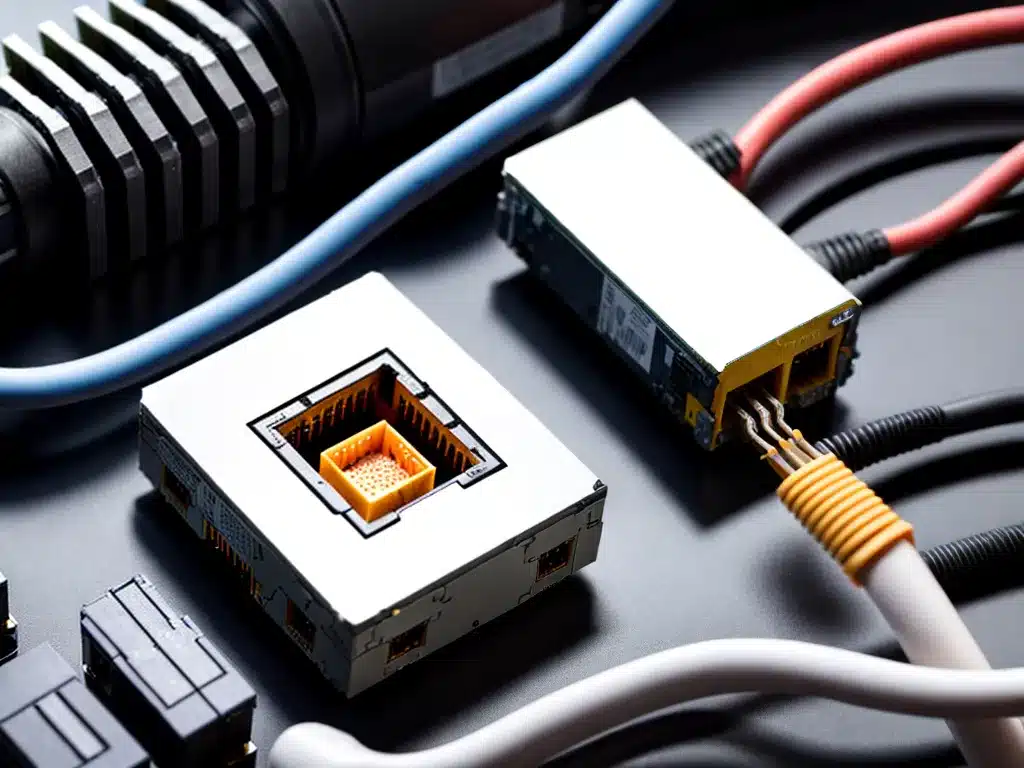
Having a stable and fast internet connection at home or in the office is crucial these days. Most of us rely on ethernet cables to provide a wired connection to the network. However, ethernet cables and connections can sometimes develop issues that disrupt connectivity. In this comprehensive guide, I will walk through the most common ethernet connection problems and provide proven solutions to get you reconnected.
Checking the Ethernet Cable
The ethernet cable physically connects your computer or device to the network. Before troubleshooting other potential issues, it’s wise to inspect the cable itself first. Here are some things to check:
-
Loose cable ends – Make sure the RJ45 connectors at each end of the ethernet cable are fully plugged into the ports on your device and router/switch. Loose connections can interrupt signal transmission.
-
Damaged cables – Inspect the entire length of the cable for any cuts, crimps, or damaged clips. Any breach of the protective casing can expose and damage the internal wiring. Replace damaged cables.
-
Faulty cables – Some ethernet cables are poorly made or defective. Try swapping the existing ethernet cable with a high-quality Cat 5e or Cat 6 cable to see if that resolves connection problems.
-
Excessive length – Ethernet cables longer than 100 meters (330 feet) can degrade network performance and cause intermittent connections. Use the shortest possible cable length.
Carefully checking over the ethernet cabling can identify and prevent many connectivity problems.
Troubleshooting Ethernet Ports
Defective ethernet ports either on your computer or network hardware can disrupt connectivity. Here are some troubleshooting tips for ports:
-
Try connecting your device to a different ethernet port on your router or switch. See if connectivity improves through another port.
-
Inspect ports for any signs of damage like bent pins or loose connections. Damaged ports may need to be replaced.
-
Update network drivers to the latest version. Outdated drivers can sometimes cause interface issues.
-
Toggle port settings if available. Try enabling/disabling auto-negotiation or adjusting speed/duplex settings.
-
As a last resort, use a USB-to-ethernet adapter. This will bypass any faulty integrated ethernet ports.
Checking multiple ports and adjusting settings can help determine if you have a bad ethernet port.
Checking Ethernet Adapter Settings
The ethernet adapter refers to the networking interface inside your computer that facilitates the connection. Software misconfigurations here can disrupt connectivity:
-
Reinstall ethernet drivers – Fully uninstall the existing drivers and reinstall the latest version from your manufacturer. Outdated drivers are a common source of problems.
-
Disable VPNs/virtual adapters – Any virtual VPN adapters or other interfering software may need to be disabled to restore full uninterrupted access to the ethernet adapter.
-
Reset TCP/IP settings – Incorrect IP address or DNS server settings can prevent connectivity. Reset TCP/IPv4 settings to automatically obtain these values.
-
Disable power management – Some ethernet adapters may try to power down to save energy. Prevent this by disabling any power management or “green” features.
-
Update BIOS/firmware – Outdated firmware for the adapter or system BIOS can cause glitches. Check for updates from your manufacturer.
Addressing any ethernet adapter configuration issues or software conflicts is key.
Checking for Malware, Spyware, or Viruses
Malicious software infections can modified system settings, corrupt drivers, initiate network attacks, and disrupt connectivity in other ways.
To rule out malware:
-
Run scans using reliable antivirus/malware tools to detect and remove any infections. Malwarebytes, Bitdefender, and HitmanPro are good options.
-
Check running processes and services for anything suspicious or unknown. Malware may disguise itself as a system process.
-
Examine browser extensions as some malware is distributed this way. Remove any unnecessary addons.
-
Inspect network traffic for unusual activity indicating malware phoning home to command servers. Large volumes of traffic from unknown sources may signal an infection.
-
Isolate the system from other devices on the network until any infections are removed. Some malware spreads on its own.
Cleaning malware off an affected system is crucial before connectivity issues can be fully resolved.
Checking Router and Network Settings
On the network side, incorrect router configurations can also disrupt ethernet connectivity:
-
Log into the router admin panel and verify DHCP is enabled so IP addresses are automatically assigned.
-
Check that the router’s firewall is not blocking the computer’s MAC address. Whitelist your device’s MAC address.
-
Make sure the router is not restricted to only communicating with certain whitelisted MAC addresses. Add your device to the list.
-
Verify the router’s ethernet ports are actually enabled and configured properly. Some routers disable ports by default.
-
Factory reset the router to default settings as a last resort. This will eliminate any misconfigurations.
Double check that the network side is not obstructing connectivity due to restrictions or errors in the router interface.
Summary
Debugging ethernet connection issues requires a systematic approach. Start with the physical cabling, then check ethernet ports, adapter settings, malware, and network configurations. With consistent diligence and by verifying each step, you can isolate the source of problems and get your devices back online. Paying attention to the details outlined here will help restore smooth and reliable ethernet connectivity.












